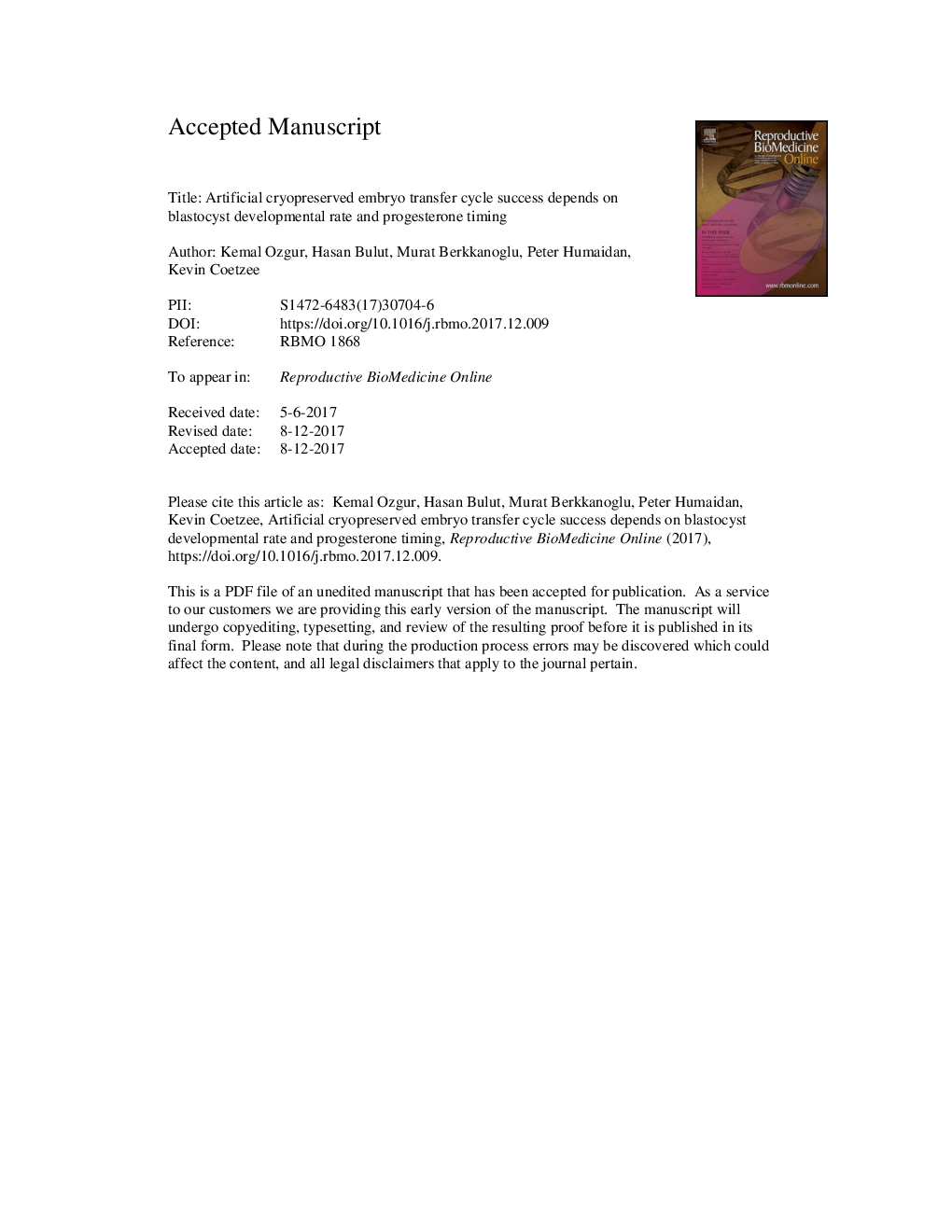| کد مقاله | کد نشریه | سال انتشار | مقاله انگلیسی | نسخه تمام متن |
|---|---|---|---|---|
| 8783893 | 1600902 | 2018 | 29 صفحه PDF | دانلود رایگان |
عنوان انگلیسی مقاله ISI
Artificial cryopreserved embryo transfer cycle success depends on blastocyst developmental rate and progesterone timing
ترجمه فارسی عنوان
موفقیت آمیز حرکات فریزر مصنوعی بستگی به سرعت رشد بلستوسیست و زمان پروژسترون دارد
دانلود مقاله + سفارش ترجمه
دانلود مقاله ISI انگلیسی
رایگان برای ایرانیان
کلمات کلیدی
موضوعات مرتبط
علوم پزشکی و سلامت
پزشکی و دندانپزشکی
زنان، زایمان و بهداشت زنان
چکیده انگلیسی
This retrospective cohort analysis compared the developmental competence of cryopreserved day-4 and 5 blastocysts, and investigated the effect of progesterone administration duration on the success of artificial frozen embryo transfers. Between October 2015 and March 2016, 868 intracytoplasmic sperm injection blastocyst cryo-all cycles were carried out, with 586 subsequently undergoing frozen embryo transfer. Of these, 243 were day-5 single blastocyst transfers (SBT) and 152 were day-4 SBT. Day-4 blastocysts were transferred on day-5 progesterone (day-4 group) and day-5 blastocysts were transferred on day-5 (short-protocol day-5 sub-group, n = 104) or day-6 (standard-protocol day-5 sub-group, n = 139) progesterone. Although more blastocysts were transferred in the standard-protocol day-5 sub-group (P = 0.009), pregnancy, clinical pregnancy and live birth rates were similar to those of the day-4 group, but were significantly lower in the short-protocol day-5 sub-group (P = 0.004, P = 0.008 and P = 0.02 respectively). For optimal outcomes, day-4 blastulating embryos should be prioritized for transfer on day 5 of progesterone and for day-5 blastocysts, transfer should be delayed by 1 day. The retrospective analysis and lack of adjustment for all known confounding variables limit the study.
ناشر
Database: Elsevier - ScienceDirect (ساینس دایرکت)
Journal: Reproductive BioMedicine Online - Volume 36, Issue 3, March 2018, Pages 269-276
Journal: Reproductive BioMedicine Online - Volume 36, Issue 3, March 2018, Pages 269-276
نویسندگان
Kemal Ozgur, Hasan Bulut, Murat Berkkanoglu, Peter Humaidan, Kevin Coetzee,
